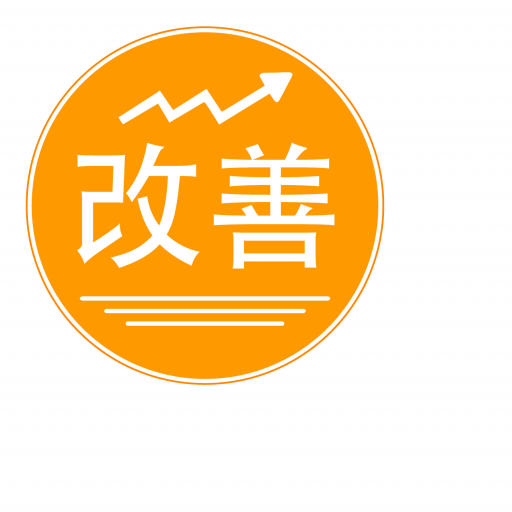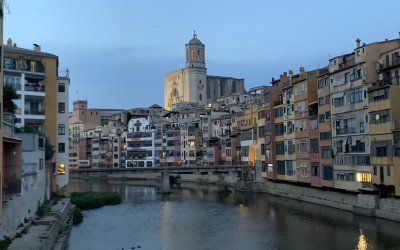Boeing’s 737 Max issues highlighted the company’s sacrifice of safety for financial performance, resulting in a tarnished reputation. The prioritization of profit over core values also damaged the FAA’s credibility and revealed a lack of accountability for top executives. This downfall serves as a reminder of the importance of maintaining core values and prioritizing them over short-term financial gains.

Can’t Solve a Problem, Maybe Its The Wrong Problem
Often we have a problem we are trying to solve. In our life, at work, in design, product, or solution. However, if you are struggling, you are probably trying to answer the wrong question. Dr. Paul MacCready, one of the best mechanical engineers of the 20th century, said it, “The problem is we don’t understand the problem.” Inversion is an excellent tool because it exposes errors and problems that are not immediately obvious. What if the opposite is true? What if I focus on the reverse of this situation? Instead of seeking how to do something, ask what the opposite is and who do I ensure that I don’t do that. The stoics visualized the worst of all situations, i.e., death so that they would appreciate life. Groundbreaking artists invert the status quo to succeed. Effective leaders ask, “What stops us succeeding” as much as they chase the skills that accelerate it.
More often, we should try Inversion. Inversion is a crucial skill that nearly all great thinkers use to their advantage. Carl Jacobi, the German mathematician, who was known for his ability to solve hard problems by following a strategy of man “Man muss immer umkehren” or, “invert, always invert.” Jacobi believed that to clarify, your thinking was to restate the problem in inverse form. He found that if he wrote down the opposite of the problem, he was trying to solve the solution came to him more easily.
Charlie Munger took Jacobi’s lesson and introduced it to value investors. When deciding on the purchase of a stock is to estimate intrinsic value in the long run, we typically ask the following questions:
- How much will I make?
- How long will it take, or what are the growth drivers are there?
- What is the stock worth, or what is a fair discount rate?
- What is the future growth rate?
All these questions are forward-looking, and if the prospects are there, we are about to dive in. However, Jacobi and Munger would invert the problem. What is the inverted question? Well, if the problem is, “How much money I can make?” the inversion is “How do not lose money?” Or, as Warren Buffett says, “Rule No 1: Never Lose Money. Rule No. 2: Never Forget Rule 1.” Thus if we look to questions about how to prevent losing money instead of making money, our four items above become:
- How can I make money?
- How much is the stock worth?
- What can go wrong?
- What is the market-implied discount rate?
- What is the market-implied growth rate?
By focusing on the inverted questions, we get a better idea if this is a good stock. Listening to a recent interview with Steven Schwarzman, CEO of The Blackstone Group, he has applied Munger’s approach to investing. The concept of inversion is applicable across many areas.
In 1959 Henry Kremer, a British industry magnate, left a haunting question: “Can an airplane fly powered only by the pilot’s body power?” Kremer believed it was possible, so he offered the Kremer prize – £50,000 ($1.3 million today) to the first person to build a human-powered plane that could fly a figure eight around two markers one half-mile apart. Furthermore, he offered an additional £100,000 ($2.5 million today) for the first person to fly a human-powered plane across the English Channel. Kremer effectively offered the first X-Prize.
Over twenty years, dozens of teams tried and failed to build an airplane that could meet the requirements. It looked impossible. However, MacCready decided to try and win the prize. As he looked at the problem, why the existing solutions failed, and how teams iterated their planes, he came to the startling realization that people were solving the wrong question. “The problem is,” he said, “that we don’t understand the problem.”
MacCready’s insight was that everyone would spend over a year building an airplane on conjecture and theory without the grounding of empirical tests. With much fanfare, they would wheel it out for a test flight, and minutes later, a year’s worth of work would smash into the ground. Even successful flights ended in a couple of meters, with the pilot physically exhausted. With a new single data point, the team would work for another year to rebuild, retest, relearn. Resulting progress was slow, but everyone accepted that it was just how it was.
The problem was the problem. If he inverted the problem, Paul realized that the problem was not succeeding at human-powered flight, as that was a red-herring. The issue was minimizing the time not flying due to failure. He came up with a new problem: can you build a plane that could be fixed and flying again in hours, not months. Making a plane with Mylar, aluminum tubing, and wire, Paul succeeded.
The first airplane didn’t work. It was too flimsy. But, because the problem Paul set out to solve was creating a plane he could fix in hours, Paul was able to iterate quickly. Flying three or four different planes in a single day, the rebuild, retest, relearn cycle went from months and years to hours and days.
Paul MacCready got involved eighteen years following the challenge and changed the understanding of the problem to be solved. Within half a year, MacCready’s Gossamer Condor flew 2,172 meters to win the prize. Just over a year later, the Gossamer Albatross successfully crossed the Channel.
What’s the take-away? When you are solving a difficult problem, re-ask the question. To quote Jacobi again, “invert, always invert.” If the issue you are trying to solve involves creating a magnum opus, you are answering the wrong problem.
A Vistage Group is a great way to have a Peer group challenge you to look at the problem from a different perspective. In our issue processing process, after asking questions and before getting input from the members, we always check, “Is the problem asked the actual problem faced?”
© 2019 Marc Borrelli All Rights Reserved
Recent Posts
The Downfall of Boeing: A Lesson in Core Values
Resolutions, Here We Go Again.
In reflecting on 2021 resolutions, the author scored themselves in three categories and sought to improve success in 2022 by addressing friction points. Drawing on advice from social psychologist Wendy Wood, the author identified areas to reduce or increase friction in their failed resolutions. By making these adjustments, the author aims to enhance their goal achievement and encourages others to consider friction when setting resolutions.
You need to take an extended vacation. No, seriously, you do.
COVID has taken a toll on all of us. If you have not taken an extended vacation in a while where you disconnect, you need to now. You and your business will benefit.
Becoming Famous in Your Niche: The Success Story of Linn Products Limited
In a previous discussion, I highlighted the importance of being famous for something. Being well-known in your niche can help you: Concentrate on your strengths Connect with your target audience Communicate your offerings more effectively Receive referrals Identify...
Understanding and Optimizing Your Cash Conversion Cycle
Understanding and optimizing the Cash Conversion Cycle is crucial for business growth, as it impacts cash flow and the ability to access external capital. This cycle consists of four components: Sales, Make/Production & Inventory, Delivery, and Billing and Payments. To improve the Cash Conversion Cycle, companies can eliminate mistakes, shorten cycle times, and revamp their business models.
Discovering Your Niche: Why You Need to Be Famous for Something
As an entrepreneur, it’s crucial to specialize in a specific area and become famous for something, allowing you to generate referrals and build your brand. Understanding the “job” you’re hired for helps you stand out in the marketplace and communicate your value proposition effectively. By providing value to your clients, you can adopt a value-based pricing approach, ensuring your business remains competitive and maintains a strong market presence.
Rethinking Your Pricing Model: Maximizing Margins and Providing Value
Rethink your pricing model by focusing on the value you provide and your customers’ Best Alternative To a Negotiated Agreement (BATNA). This approach can help you maximize margins while delivering better value to your clients. Assess your offerings and brainstorm with your team to identify pricing adjustment opportunities or eliminate commodity products or services.
Do you know your Profit per X to drive dramatic growth?
I recently facilitated a workshop with several CEOs where we worked on the dramatic business growth model components. One of the questions that I had asked them beforehand was, "What is Your Profit/X?" The results showed that there this concept is not clear to many....
The War for Talent: 5 Ways to Attract the Best Employees
In today’s War for Talent, attracting the best employees requires a focus on value creation, core customer, brand promise, and value delivery. Clearly articulate your company’s mission, identify your “core employee” based on shared values, and offer more than just a salary to stand out as an employer. Utilize employee satisfaction metrics and showcase your company’s commitment to its workforce on your website to make a strong impression on potential candidates.
Are you killing your firm’s WFH productivity?
Productivity remained during WFH with COVID. However, further analysis found that hourly productivity fell and was compensated for by employees working more hours. What was the culprit – Meetings. Want to increase productivity, have fewer meetings.












